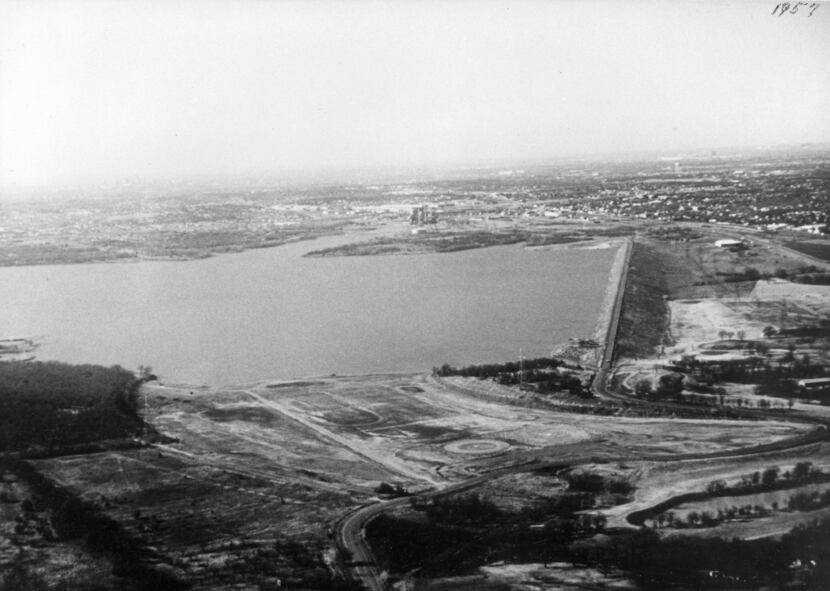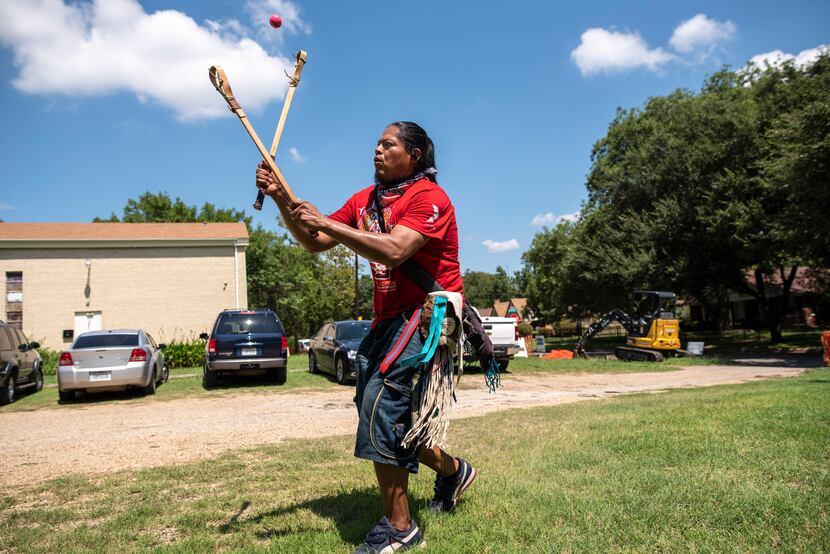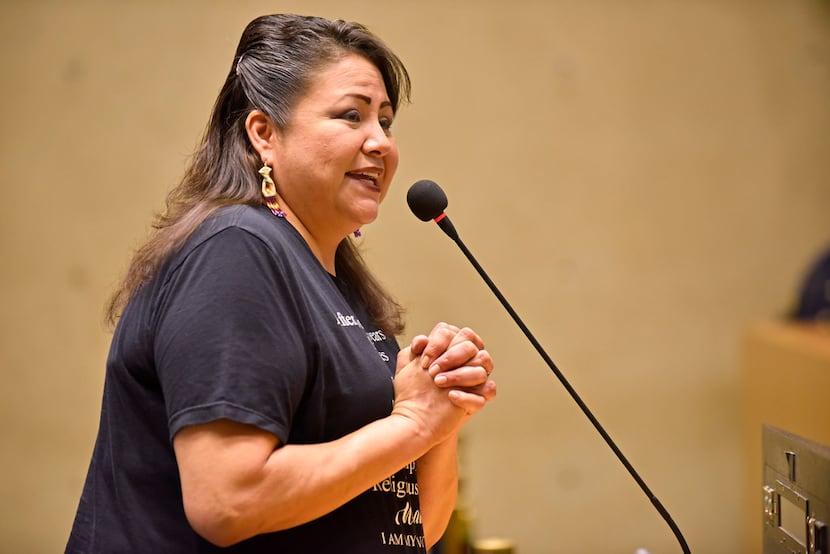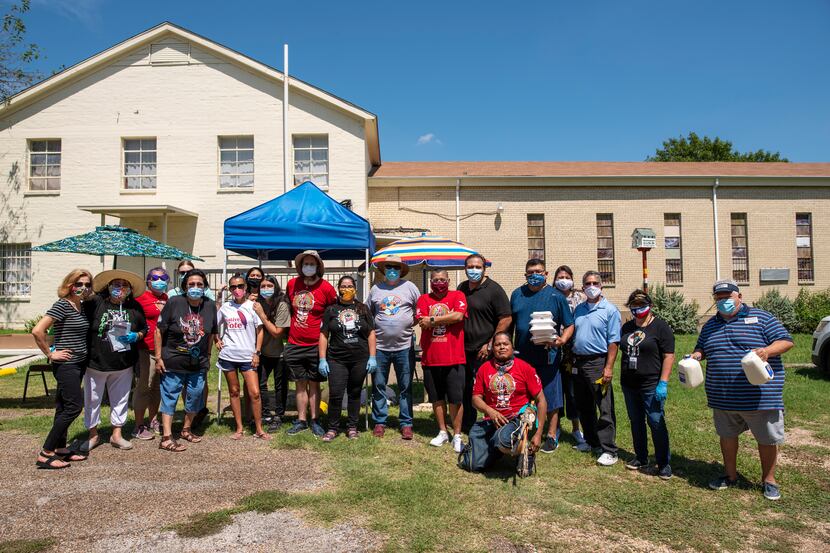Recently, a reader asked Curious Texas: “What happened to the Native Americans that resided in the North Texas area? When were they pushed out, and how come there aren’t any reservations in North Texas?”
The three federally recognized tribes in Texas are the Alabama-Coushatta Tribe of Texas in Livingston, founded in 1854; the Kickapoo Traditional Tribe of Texas in Eagle Pass, founded in 1983; and the Ysleta del Sur Pueblo in El Paso, founded in 1968. None are in North Texas.
To understand why no tribes are in this area, Curious Texas took a step back to research the history of Native Americans in Texas.
After Mirabeau B. Lamar became president of the Republic of Texas in 1838, he declared an “exterminating war” on Native Americans, said Scott Langston, Native American nations and communities liaison and instructor of religion at Texas Christian University.
The removal of indigenous peoples from Texas took place around the same time as the Trail of Tears, or the forced relocation of tribes from all across the country — most notably Cherokee — to northeastern Indian Territory, Langston said. Some 4,000 Native Americans died during the Trail of Tears, which lasted from 1830 to 1850.

In Texas, the extermination effort wiped out nearly all American Indians around the republic.
“Lamar’s whole point — and of those who supported him, which was the vast, vast majority of Texans — was to either kill all Indians literally or culturally to remove them from the Republic so that they could get their lands,” Langston said. “And that’s why I’m very comfortable in calling this a genocide.”
Langston and other historians have pointed to the 1841 Battle of Village Creek, which occurred on the border of present-day Fort Worth and Arlington, as one of the final acts in the removal of Native Americans in North Texas. The attack, in which Gen. Edward H. Tarrant and 69 militiamen from Red River settlements carried out a raid on Village Creek tribes, killed more than a dozen Native Americans as well as John B. Denton, for whom Denton County is named.
The attack, Langston said, was carried out in retaliation for Native American raids on settlements along the Red River — raids that he said were an attempt to “repel a foreign invasion.”
“Indian peoples responded in an effort to protect their families, their lives, their homeland, in a way that any of us would respond,” he said. “I think that gets overlooked, because in the American telling and the texts and telling of history, we want to make it sound like this great, heroic event that took place and that it’s the progress of civilization.”

After the Battle of Village Creek, reservations were established in Young and Throckmorton counties for the resettlement of American Indians primarily from the Caddo, Comanche and Wichita nations. The reservations existed from 1854 to 1859, and when they closed, their occupants were relocated to reservations in Oklahoma.
That was the end of Native American reservations in North Texas.
In 1956, more than a century after Lamar launched the extermination war, Congress established the Indian Relocation Act to encourage American Indians to move off the reservations and to assimilate into urban centers under the premise of receiving education and health care, as well as help finding work.
Native Americans were moved to cities including Dallas, Chicago, New York City and Philadelphia. From 1957 to 1973, over 10,000 American Indians representing 82 tribes moved to the Dallas area through the program, according to the Urban Inter-Tribal Center.
By 1983, an estimated 20,000 American Indians were living in west Oak Cliff and East Dallas, accounting for about half of the state’s Native American population. However, many were struggling as an “invisible minority,” The Dallas Morning News reported in 1983. Rather than being integrated into society, they struggled with culture shock and found they had little to no political voice.
Linda Pahcheka-Valdez, 66, a full-blooded Comanche living in Oak Cliff, was 9 years old when she came to Dallas from Cache, Okla., with her family through the Indian Relocation Act. Pahcheka-Valdez said she believed the program was initiated to make Native Americans “forget that we were Indian.”
“They put us in areas like the West Dallas projects, and in the projects, our people became aware of each other,” she said. “We have four Native American Indian churches here in Dallas. And we have a tendency to find each other.”

“We are a community, but we are scattered. We’re all over North Texas,” said Pat Peterson, a citizen of the Choctaw Nation of Oklahoma. Peterson said her family was among the first to move to Texas through the Indian Relocation Act.
In the city of Dallas, more than 4,000 people identify as American Indian, according to 2019 U.S. Census Bureau estimates. But for many Native Americans, Texas has turned a blind eye on its Native American history. To them, the lack of federal recognition of native tribes leads many non-natives to believe that American Indian communities don’t exist.
The most painful reality that area Native Americans live with is that many North Texans don’t realize that they live on stolen land, said Yolanda Blue Horse, a Dallas resident and citizen of the Rosebud Sioux Tribe.

“It’s simple,” Blue Horse said. “A lot of people don’t realize that this is land that is supposed to belong to all of the indigenous people.”
Peggy Larney, a citizen of the Choctaw Nation of Oklahoma and a former Dallas ISD employee living in Dallas, has been advocating for land acknowledgment, or the act of recognizing that indigenous peoples are the original inhabitants of the land.
Larney knows it’s an uphill battle. In 2019, she was among those who successfully lobbied for the city to recognize Indigenous Peoples’ Day, which serves as a salute to the peoples who once roamed North Texas and is a small victory for the community.
To work toward land acknowledgment, Larney said conversations need to be started among the community to give the issue more visibility.
“Everybody that lives here in Dallas needs to realize that this is stolen land that was taken away from the Indians and what tribes used to live here a long time ago,” Larney said. “And they need to give gratitude to those people that are stewards of this land before they got pushed out.”
The ultimate goal is mutual respect, Blue Horse said.
“We have been so beaten down through the years, and we’re still here, and we’re still fighting,” she said. “It’s been quite a struggle for a lot of the people here.”
What should we answer next?
Tell us
What do you wonder about the culture, people and institutions of North Texas — and the rest of our great state? Help us investigate stories that matter to you.
No question is too big or too small. Let’s get started. Visit this link to pose your question and vote on which questions we should answer.

